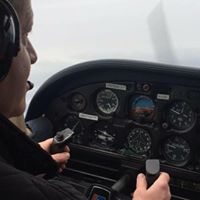Kenneth G Lang
age ~57
from Goodrich, MI
- Also known as:
-
- Kenneth Gerald Lang
- Kenneth Michelle Lang
- Kenneth M Lang
- Kenneth L Lang
- Ken G Lang
- Ken M Lang
- Phone and address:
- 9209 Henderson Rd, Goodrich, MI 48438
Kenneth Lang Phones & Addresses
- 9209 Henderson Rd, Goodrich, MI 48438
- 5444 Walker Rd, Davison, MI 48423 • 8106363422
- Metamora, MI
- Au Gres, MI
- Blacklick, OH
- Lapeer, MI
- Ortonville, MI
Resumes

Manager - Pmo At Meritor
view sourcePosition:
Manager - PMO at Meritor
Location:
Greater Detroit Area
Industry:
Transportation/Trucking/Railroad
Work:
Meritor - Troy, MI since Jan 2012
Manager - PMO
ArvinMeritor - Troy, MI Feb 2008 - Jan 2012
Manager - Product Line Management - NA Trailer Products
ArvinMeritor - Troy, MI May 2007 - Feb 2008
DMO Wave Lead
ArvinMeritor - Troy, MI Aug 2001 - May 2007
OEM Account Manager - Trailer & Suspension Products
ArvinMeritor - Troy, MI Sep 2000 - Aug 2001
Product Line Manager - Trailer Products & Suspensions
Manager - PMO
ArvinMeritor - Troy, MI Feb 2008 - Jan 2012
Manager - Product Line Management - NA Trailer Products
ArvinMeritor - Troy, MI May 2007 - Feb 2008
DMO Wave Lead
ArvinMeritor - Troy, MI Aug 2001 - May 2007
OEM Account Manager - Trailer & Suspension Products
ArvinMeritor - Troy, MI Sep 2000 - Aug 2001
Product Line Manager - Trailer Products & Suspensions
Education:
University of Michigan-Flint 1996 - 2000
MBA Michigan Technological University 1989 - 1993
BSME Macomb Community College 1987 - 1989
AAS, Robotics & Flexible Automation
MBA Michigan Technological University 1989 - 1993
BSME Macomb Community College 1987 - 1989
AAS, Robotics & Flexible Automation

General Manager At Harrington Industrial Plastics
view sourcePosition:
General Manager at Harrington Industrial Plastics
Location:
Bozeman, Montana
Industry:
Plastics
Work:
Harrington Industrial Plastics
General Manager
General Manager
Medicine Doctors

Kenneth C. Lang
view sourceSpecialties:
Family Medicine
Work:
Coos County Family Health SvsCoos County Family Health Services
2 Broadway Ave, Gorham, NH 03581
6034662741 (phone), 6034662953 (fax)
Coos County Family Health SvsCoos County Family Health Services
133 Pleasant St, Berlin, NH 03570
6037523669 (phone), 6037527797 (fax)
2 Broadway Ave, Gorham, NH 03581
6034662741 (phone), 6034662953 (fax)
Coos County Family Health SvsCoos County Family Health Services
133 Pleasant St, Berlin, NH 03570
6037523669 (phone), 6037527797 (fax)
Education:
Medical School
Ohio State University College of Medicine
Graduated: 1970
Ohio State University College of Medicine
Graduated: 1970
Procedures:
Arthrocentesis
Destruction of Benign/Premalignant Skin Lesions
Electrocardiogram (EKG or ECG)
Vaccine Administration
Destruction of Benign/Premalignant Skin Lesions
Electrocardiogram (EKG or ECG)
Vaccine Administration
Conditions:
Diabetes Mellitus (DM)
Acne
Acute Bronchitis
Acute Pharyngitis
Acute Sinusitis
Acne
Acute Bronchitis
Acute Pharyngitis
Acute Sinusitis
Languages:
English
French
French
Description:
Dr. Lang graduated from the Ohio State University College of Medicine in 1970. He works in Gorham, NH and 1 other location and specializes in Family Medicine. Dr. Lang is affiliated with Androscoggin Valley Hospital.
Isbn (Books And Publications)

Wanderers in Space: Exploration and Discovery in the Solar System
view sourceAuthor
Kenneth R. Lang
ISBN #
0521249767

Wanderers in Space: Exploration and Discovery in the Solar System
view sourceAuthor
Kenneth R. Lang
ISBN #
0521422523




A Companion to Astronomy and Astrophysics: Chronology and Glossary with Data Tables
view sourceAuthor
Kenneth R. Lang
ISBN #
0387333673


Name / Title
Company / Classification
Phones & Addresses
KT PROPERTIES, LTD
HAVSCO HEATING & AIR CONDITIONING CO., LTD
L/D ENTERPRISES CO
KOM KARE CO., LLC
AMBINA PROPERTIES, LLC
CANNON PROPERTIES, LTD
Us Patents
-
Vehicle Suspension With A Dock Height Holding Device
view source -
US Patent:6786509, Sep 7, 2004
-
Filed:Nov 6, 2001
-
Appl. No.:09/992496
-
Inventors:Kenneth G. Lang - Davison MI
Steven R. Miller - Clarkston MI
James Eckelberry - Canton OH
Richard M. Clisch - Canton MI -
Assignee:Meritor Heavy Vehicle Technology, LLC - Troy MI
-
International Classification:B60G 17005
-
US Classification:280754, 280 6151, 280124158, 267 2412, 267122, 267218
-
Abstract:A vehicle suspension assembly includes a height holding device that is at least partially supported within an air spring of the suspension assembly. The height holding device includes a hydraulic ram. A moveable portion of the hydraulic ram moves between a first position where a minimum clearance is maintained between suspension components and a second position where a larger clearance is maintained between the suspension components. The height holding device moves into the second position to maintain a desired height of the truck or trailer bed during loading and unloading operations at a loading dock, for example. The height holding device allows for the suspension air springs to be evacuated of air pressure during loading or unloading conditions without a change in deck height.
-
Vehicle Suspension Including Dock Height Holding Device
view source -
US Patent:6820883, Nov 23, 2004
-
Filed:Nov 7, 2001
-
Appl. No.:10/044853
-
Inventors:Kenneth G. Lang - Davison MI
James Eckelberry - Canton OH
Steven R. Miller - Clarkston MI
Richard M. Clisch - Canton MI -
Assignee:Meritor Heavy Vehicle Technology LLC - Troy MI
-
International Classification:B60G 1300
-
US Classification:280124157, 280DIG 1, 267 35, 267220
-
Abstract:A vehicle suspension includes a dock height holding device. First and second jounce bumper portions preferably each include a surface configuration that faces generally toward the oppositely facing jounce bumper portion. By moving at least one of the jounce bumper portions between first and second alignment positions, the clearance between suspension components is controlled in a manner that controls the height of a truck bed or trailer deck. In one example, each jounce bumper portion includes four projections and four spaced recesses. In the first alignment position the projections on one jounce bumper portion are received within the recesses on the oppositely facing portion during normal driving conditions. In the second alignment position, the projections of the jounce bumper portions engage each other and maintain a larger clearance between the suspension components to ensure an appropriate deck height when the vehicle is parked for loading or unloading.
-
Walking Watts Air Beam
view source -
US Patent:7229094, Jun 12, 2007
-
Filed:May 25, 2004
-
Appl. No.:10/853426
-
Inventors:Steven R. Miller - Clarkston MI, US
Mark P. Reynolds - Birmingham MI, US
James Eckelberry - Canton OH, US
Robert P. Carlstedt - Rochester Hills MI, US
Daniel G. Chien - Franklin MI, US
Kenneth G. Lang - Davison MI, US
Martin Peaker - Upton, GB
Nancy L. Saxon - Oakland Township MI, US
Jos Timmermann - Oak Park MI, US
Jeff Lloyd - Auburn Hills MI, US
James Grant - Royal Oak MI, US
Richard M. Clisch - Canton MI, US -
Assignee:ArvinMeritor Technology, LLC - Troy MI
-
International Classification:B60G 5/00
-
US Classification:280677, 280124107
-
Abstract:A tandem axle suspension assembly includes a pair of walking beams disposed substantially parallel to a vehicle longitudinal axis supporting first and second axles. A link plate is pivotally attached to each of the walking beams and is pivotal about an axis transverse to the longitudinal axis. A first and a second link include pivotal connections between the link plate and a vehicle frame member. Vertical movement of the walking beams causes a corresponding rotation of the link plate to compensate for longitudinal displacement of the pivotal links with the first and second links and minimize longitudinal displacement of the walking beams.
-
Adjustment Assembly
view source -
US Patent:8528920, Sep 10, 2013
-
Filed:Mar 1, 2011
-
Appl. No.:13/037423
-
Inventors:Gustavo Vieira Borges - Whitehouse OH, US
Robert J. Brazeau - Kalamazoo MI, US
Christopher J. Wittry - Georgetown KY, US
Michael D. Lynch - Attica MI, US
Michael A. Power - Millbrook AL, US
Gregory Todd Smith - Mason OH, US
Kenneth G. Lang - Davison MI, US
Anthony E. Nicol - Aurora, CA
Gregory D. Pavuk - Berkley MI, US
Edward J. Gebal - Troy MI, US
Thomas S. Mijal - Macomb Township MI, US
Esequiel Berra de Mello - Troy MI, US
Christopher S. Keeney - Troy MI, US
David G. Gonska - Beverly Hills MI, US -
Assignee:Arvinmeritor Technology, LLC - Troy MI
-
International Classification:B62D 17/00
-
US Classification:280 8675, 280124128, 280124153, 403321
-
Abstract:An adjustment assembly includes first and second connection points associated with a component. The second connection point is selectively adjustable to adjust a position of the component. A shield has one end coupled to the first connection point and an opposite end proximate to the second connection point to selectively prevent access to the second connection point. The shield is selectively movable when the first connection point is loosened to allow access to the second connection point. To achieve proper adjustment of the component, the first connection point must be loosened prior to adjusting a position of the second connection point.
-
Lateral Leaf Spring With Inboard Air Spring Trailer Suspension
view source -
US Patent:20050023792, Feb 3, 2005
-
Filed:Aug 1, 2003
-
Appl. No.:10/632546
-
Inventors:Steven Miller - Clarkston MI, US
James Grant - Royal Oak MI, US
Gregory Pavuk - Royal Oak MI, US
Kenneth Lang - Davison MI, US
Rod Ehrlich - Monticello IN, US
Francis Smidler - Lafayette IN, US
Andrzej Wylezinski - Lafayette IN, US -
International Classification:B60G001/00
-
US Classification:280124163
-
Abstract:A vehicle suspension system is provided that includes a frame and pair of laterally spaced apart upper control arms pivotally supported by the frame at pivotal connections. A knuckle is connected to each of the upper control arms. A leaf spring is connected to the lower portion of the knuckles at pivotal connections and serves as the lower control arms. The upper control arms extend away from the knuckles, and air springs are arranged between the upper control arms and the frame. A pressurized air system is connected to the air springs to control the air springs for providing desired ride characteristics.
-
Tandem Axle Suspension Assembly
view source -
US Patent:20050263986, Dec 1, 2005
-
Filed:May 26, 2004
-
Appl. No.:10/853956
-
Inventors:Steven Miller - Clarkston MI, US
Mark Reynolds - Birmingham MI, US
James Eckelberry - Canton OH, US
Robert Carlstedt - Rochester Hills MI, US
Daniel Chien - Franklin MI, US
Kenneth Lang - Davison MI, US
Martin Peaker - Upton, GB
Nancy Saxon - Oakland Township MI, US
Jos Timmermans - Ortonville MI, US
Jeff Lloyd - Auburn Hills MI, US -
International Classification:B60G005/00
-
US Classification:280683000
-
Abstract:A vehicle suspension assembly includes a control rod pivotally connected between a vehicle frame and an axle. The control rod controls longitudinal and vertical movement of the axle. A spring member is pivotally connected to the frame and fixed to the axle. Air spring assemblies are mounted between the axle and frame. The rigidly mounted spring member exerts torsion forces on the axle to counter roll forces and the air spring assemblies provide favorable ride characteristics adaptable to various trailer load conditions.
-
Remote Control Of Sliding Trailer Suspension Lock Pins
view source -
US Patent:20110077822, Mar 31, 2011
-
Filed:Sep 29, 2009
-
Appl. No.:12/568691
-
Inventors:Kenneth G. Lang - Davison MI, US
William Larry Burgin - Clarkston MI, US -
International Classification:G06F 19/00
B60G 5/00 -
US Classification:701 37
-
Abstract:A trailer sliding suspension is remotely controlled to move between locked and unlocked positions. To unlock the sliding suspension, the driver initiates generation of a first signal which is communicated to an electronic control unit of a trailer anti-lock brake system. The electronic control unit then generates an unlocking signal in response to the first signal to unlock the sliding suspension such that a position of the sliding position can be adjusted relative to a trailer supported by the sliding suspension. Once the sliding suspension is in the desired position, the driver generates a second signal which is communicated to the electronic control unit. The electronic control unit then generates a locking signal in response to the second signal to lock the sliding suspension to a trailer body rail.
-
Rolling Neutral Mode Control Systems And Methods
view source -
US Patent:20120304960, Dec 6, 2012
-
Filed:Jun 2, 2011
-
Appl. No.:13/151692
-
Inventors:Richard A. Weaver - Brighton MI, US
Kenneth K. Lang - Saline MI, US -
Assignee:GM Global Technology Operations LLC - Detroit MI
-
International Classification:F02D 41/12
-
US Classification:123325
-
Abstract:An engine control module includes a deceleration fuel cutoff (DFCO) module, an actuator control module, and a rolling neutral (RN) module. The DFCO module determines whether to disable provision of fuel to an engine when a vehicle speed is greater than zero and selectively generates a DFCO signal based on the determination. The actuator control module disables the provision of fuel to the engine when the DFCO signal is generated. The RN module selectively generates an RN mode signal in response to a determination that the DFCO module is not generating the DFCO signal. The actuator control module controls the provision of fuel to the engine based on a desired engine speed when the RN mode signal is generated. A transmission control module disengages first and second input clutches of a dual clutch transmission (DCT) to decouple the DCT from the engine when the RN mode signal is generated.
Plaxo

Kenneth Lang
view sourceMahwah, NJ
Classmates

Kenneth Lang
view sourceSchools:
Beiseker Community High School Beiseker Azores 1949-1954
Community:
Sara Jahn

Kenneth Lang
view sourceSchools:
Northgate High School Pittsburgh PA 1985-1989
Community:
Thomas Atkinson, Thomas Donovan, Ken Holden, Christina Young

Kenneth Lang
view sourceSchools:
Parksley High School Parksley VA 1958-1962
Community:
Valerie Turlington, Rose Huff, Patti Bright, Juanita Tilghman, Harold Bushong

Kenneth Lang
view sourceSchools:
Hartford High School Hartford AR 1977-1981
Community:
Claude Napier, Kristy Newman, Dena Dugan, Elaine Miller

Kenneth Lang
view sourceSchools:
Waterford District High School Waterford Morocco 1981-1985
Community:
Barbara Kischel

Kenneth Lang
view sourceSchools:
St. Michael's High School Union City NJ 1962-1963
Community:
Judith Okeefe, Daniel Pivano, William Zeeck, George Ades, Vincenza Sorvino, Karen Merlino

Kenneth Lang
view sourceSchools:
Gordon High School Gordon NE 1940-1944
Community:
Jay Green, Vera Wolkins, Virginia Sees, Dan Bitner, Daniel Bitner, Betty Webster, Robert Kolesnikoff, Ross Rash

Kenneth Lang | Jackson Me...
view sourceYoutube
Myspace
Googleplus

Kenneth Lang
Work:
Mars, Incorporated - Consultant (2013)
Steps To Success - Social media analyst (2011-2013)
Sharp Electronics - E-Documentation Specialist (2010-2011)
MGD Services - Consultant (2009-2010)
NJPING - Consultant (2008-2009)
United Parcel Service - Programmer (2000-2008)
Steps To Success - Social media analyst (2011-2013)
Sharp Electronics - E-Documentation Specialist (2010-2011)
MGD Services - Consultant (2009-2010)
NJPING - Consultant (2008-2009)
United Parcel Service - Programmer (2000-2008)
Education:
Montclair State University, Chubb Institute
Tagline:
Social media analyst with IT Project Lead experience, specifically SharePoint
Bragging Rights:
Always for my next challenge, personal and professional

Kenneth Lang

Kenneth Lang

Kenneth Lang

Kenneth Lang

Kenneth Lang

Kenneth Lang

Kenneth Lang

Kenneth Lang
view source
Kenneth Lang Sr.
view source
Kenneth Lang
view source
Kenneth Ann Lang
view source
Kenneth Lang
view source
Kenneth Lang Sr
view source
Kenneth Lang
view source
Kenneth Lang
view sourceFlickr
Get Report for Kenneth G Lang from Goodrich, MI, age ~57
















